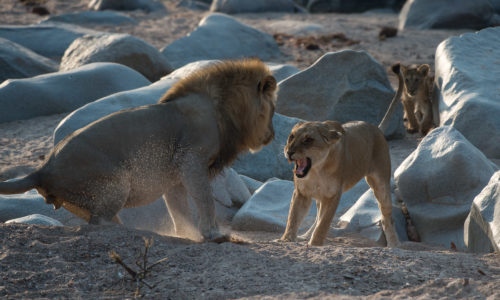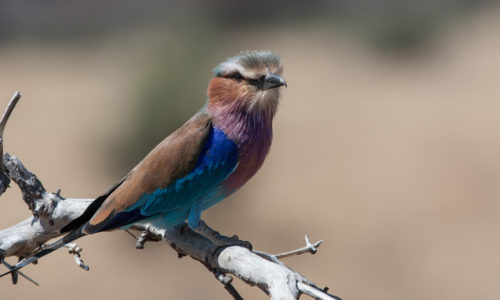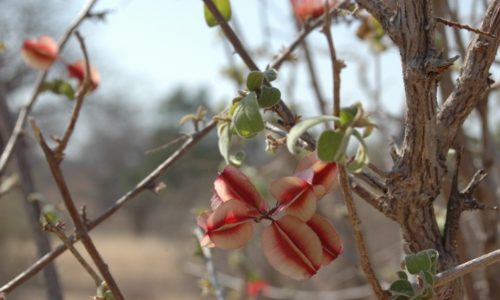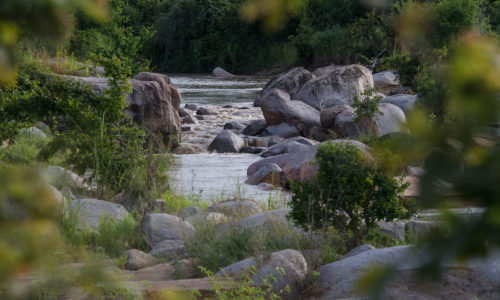Ruaha National Park has been dubbed the undiscovered gem of Tanzania and is often called “Tanzania’s best kept secret”.
Ruaha National Park has been dubbed the undiscovered gem of Tanzania and is often called “Tanzania’s best kept secret”. Situated far off the beaten track, away from crazy camera clicking crowds this rough tract of wilderness pulsates the real energy of an Africa long-forgotten. Visitors come to Ruaha to enjoy the dramatic landscapes and abundance of wildlife, with well-maintained roads and few visitors.
Dramatic landscapes, a huge variety of plant and bird life and an abundance of animals make Ruaha the perfect safari holiday destination. Situated in Southern Tanzania, Ruaha National Park makes up part of the less-frequented southern tourist circuit. Currently only one third of Ruaha’s 20,226 sq km area is used for tourism leaving a greater majority of wilderness untouched and undiscovered.
The central spine of the Park is the watershed between the Mzombe and the Great Ruaha river, with its dramatic escarpment above which are large stretches of miombo woodland. Below this lie undulating plains with vegetation ranging from dry bush country to treeless grasslands, swamps and evergreen forests intersected by the many sand rivers that are such a spectacular feature of this area. Ruaha represents a transition zone where eastern and southern species of flora and fauna overlap and in all some 1,650 plant species can be found here. Ruaha is a bird watchers paradise with approximately 526 bird species (more than half of those found in the whole country!).

Highly skilled and well-trained guides offer guests the opportunity to share in their passion for the African bush and benefit from their years of experience. With specially adapted, open-sided 4WD vehicles, guests are afforded the very best game viewing experience that Ruaha has to offer.

The park consists of 4 main ecological zones, each with its own animal and plant life. The Ruaha and its tributaries are banked by green woodland, namely fig, acacia, tamarind, baobab and doum palm.

The park consists of 4 main ecological zones, each with its own animal and plant life. The Ruaha and its tributaries are banked by green woodland, namely fig, acacia, tamarind, baobab and doum palm.

Ruaha is a great year round park due to its good road network and is beautifully spectacular no matter when you visit. Rain or shine – Ruaha is magnificent! Ruaha is characterised by two distinctive seasons – the “green” and “yellow” season.
The South Central area of Tanzania where Ruaha is located has the lowest rainfall in Tanzania. June to December are the driest months with the focus of wildlife viewing around the drying rivers and permanent waterholes.
The average rainfall varies from 800mm per year above the escarpment to 520mm per year in the lower Ruaha valley. The rains generally fall between November and April, starting with short rains which grow in intensity. The coolest month is normally June with a daytime maximum of 30°C dropping to 15°C at night. Temperatures continue to rise throughout the year with a daytime temperature of 40°C during the day falling to only 25°C at night.
Ruaha’s average altitude is around 1000 metres above sea level, though elevations vary from 750 metres in the Ruaha valley to 1,868 metres at the summit of the escarpment. These peaks and hills contribute to the appealing visual landscapes of the park.
The escarpment, an offshoot of the Great Rift Valley further west, bends towards the Ruaha on either hand, enclosing, that area of the park (about one fifth) presently used by tourists, leaving the plateau beyond largely covered by Miombo and rising gradually from the escarpment, rarely visited.
Previously the park covered an area of 10,330 sq km but in early 2008 the park was extended virtually overnight to its much larger current size of 20,226 sq km including an additional 4,500 sq km of grassland and swamp.
In 2019 at the time of writing the Ruaha was the largest park in Tanzania, however plans are underfoot to upgrade a large portion of the Selous Game Reserve to become Julius Nyerere National park with 33,000 sq km. But we will still be part of the largest wildlife protected ecosystem in tanzania.


